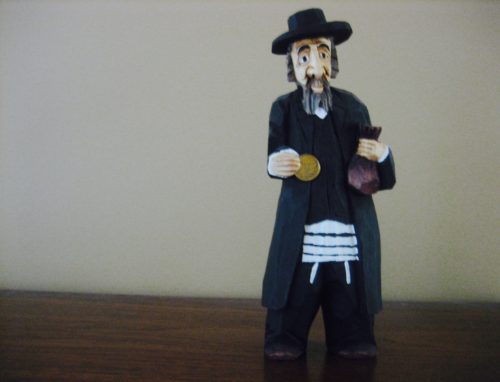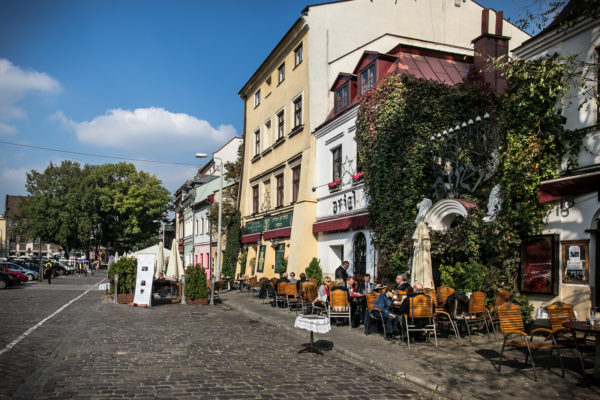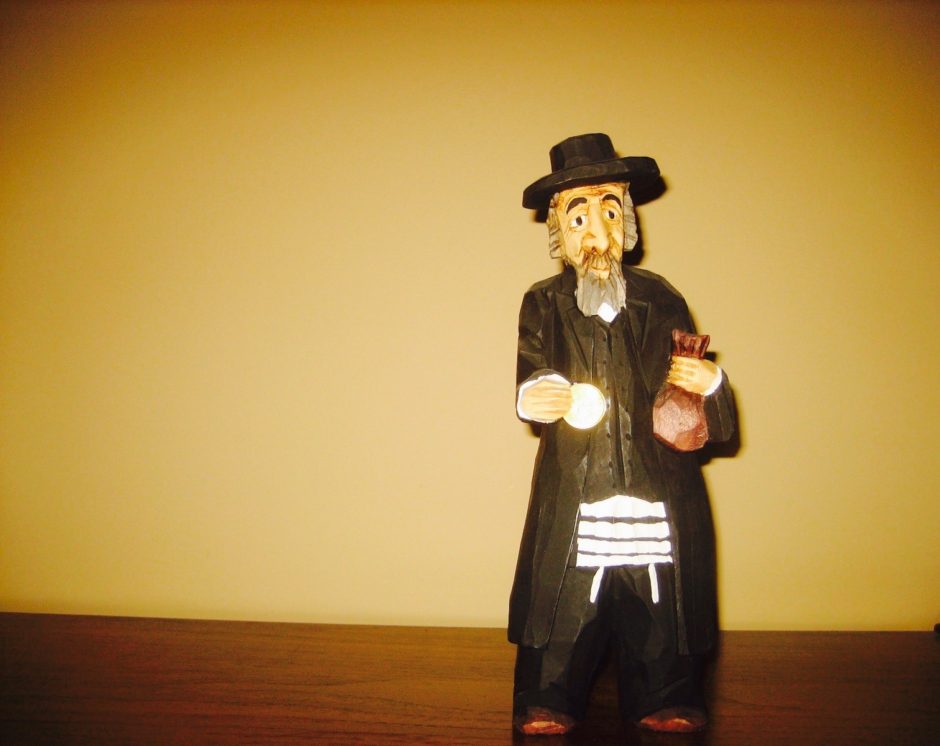Stocked on the shelves of souvenir shops throughout Poland are wooden or plastic figurines of ultra-Orthodox Jews. Some, evoking the long lost shtetl, exude a certain nostalgic charm. Still others, portraying stereotypical Jews clasping a coin in one hand and clutching a bag of coins in another hand, pander to deeply-entrenched notions of money-grubbing Polish Jews.

On my last two trips to Poland, in 2009 and 2016, I bought two such figurines, despite my profound reservations. My friend, who shares my unease, made a similar purchase when he visited Poland last year. I presume that many Jewish tourists buy them, their sense of disquiet notwithstanding. And who knows how many non-Jewish visitors, local and foreign, snap them up.
It’s safe to assume, I think, that these figurines are a source of lucrative business for Polish woodcarvers and shopowners.
To me, they’re offensive and a constant reminder of the fraught nature of Polish-Jewish relations.
When I visited Poland for the first time in 1977, when it was firmly under the sway of the communists, figurines of this kind were not sold. Or at least I never saw any in souvenir shops. Having hounded thousands of highly assimilated Jews out of Poland in 1967 and 1968 in a state-sponsored antisemitic campaign officially portrayed as anti-Zionist, the Polish government was now interested in buffing up its international image and laying to rest accusations that it had whipped up antisemitism, only two decades after the Holocaust.
As far as the Polish regime was concerned, no good could come from allowing questionable “Lucky Jew” figurines to be sold in state-owned handicraft stores.
I saw no such figurines when I returned to Poland in 1983 to cover the 40th anniversary of the Warsaw Ghetto uprising, an event the Communist Party calculatingly used to try to repair its damaged relations with Diaspora Jews.
When I set foot in Poland again in 2009, the communist era had ended and democracy had dawned in the country where three million Jews had perished during the six-year Nazi occupation. It was during this visit that I first laid eyes on these jarring and politically-incorrect figurines.

I came upon them in Kazimierz, a rather quaint neighborhood in Krakow that had been a centre of Jewish life before Germany’s invasion of Poland on September 1, 1939.
Kazimierz, having fallen into disrepair in the wake of the Holocaust, was still mouldering away in the 1970s and 1980s. But with the fall of communism in Poland in 1989, Kazimierz was resurrected by smart Polish entrepreneurs who realized that there was money to be made, lots of it, from the tourist trade. They instinctively understood that Jews, in particular, would flock to Kazimierz, which evoked a world that had been utterly destroyed by Nazi Germany in just a few short years.
My first impression of Kazimierz, I admit, was positive as I wandered around its cobble-stone square and side streets, pausing at Jewish-style restaurants to examine their non-kosher menus, sipping cappuccino and biting into cheese cake at cafes, visiting synagogues and stopping at the stalls and shops of vendors flogging Judaica and Jewish-flavored books.

But I was taken aback and more than a little disappointed when I spied the “Lucky Jew” figurines in souvenir stores and boutique hotels. I wondered why Polish merchants who profited handsomely from the influx of Jewish travellers would not be more attuned and sensitive to their sensibilities. I was dead wrong, of course. Regarding them as purely as good luck charms rather than antisemitic totems, they were only too glad to sell them. So much for empathy.
When I asked a hotel owner why he carried the figurines, his jaw dropped and his face turned ashen before comparing them to cigar-store Indians in Canada or the United States.
I raised this issue during a round of interviews.
“In Polish folklore, Jews and money go together,” said Anna Pawlikowski, a magazine editor and advocate of Christian-Jewish dialogue. “Some Poles don’t understand that these figurines offend Jews.”
Although Poland was home to 3.3 million Jews prior to 1939, Jews and Poles essentially lived separate lives and inhabited different solitudes, said Monika Adamczyk-Garbowska, an academic. As a result, they could rarely empathize with each other. Hence the problematic “Lucky Jew” figurines.
It’s unlikely that “Lucky Jews” will vanish from shops in Poland, a staunchly Catholic nation of deeply-ingrained customs and traditions. But incremental change is possible. When Rafal Pankowsksi, a founder of the Warsaw-based Never Again anti-racism organization, condemned the figurines in a statement released late last year, the souvenir shop in the Polish parliament took notice and eventually banned them.

In the interests of improving Polish-Jewish relations, the Polish government should use its moral authority to discourage their sale. Alternatively, tourists can stop buying these repulsive figurines.
